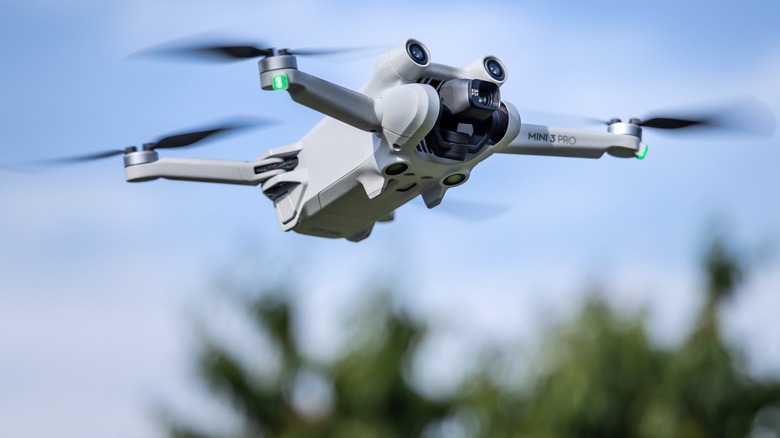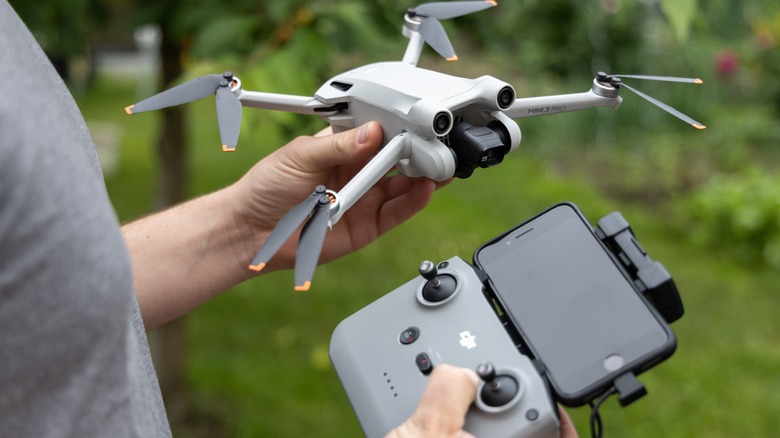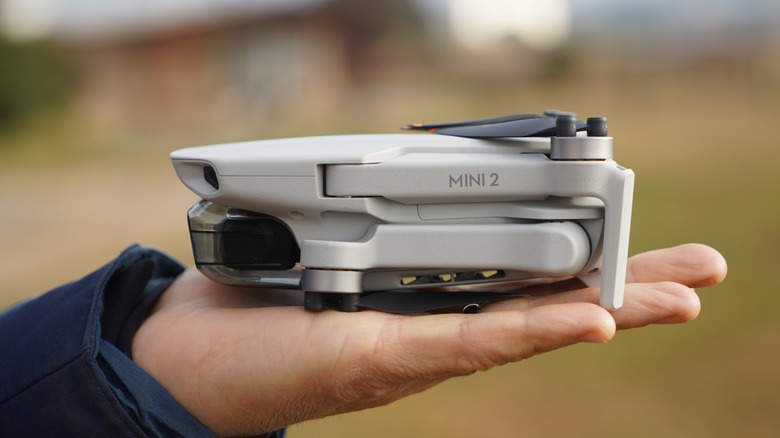Mini Drones: Are They Worth The Buzz Or Just A Waste Of Money?
Drone technology has been consistently improving since long before the first smartphone-compatible unmanned aerial vehicle (UAV) hit the market in 2010. What were once cumbersome designs have shrunk to near pocket-sized proportions, but while drones are shrinking in size, their cost tends to increase with each new release.
DJI is one of the most notable brands for consumer drones, with the Mini series providing users with a lightweight, easy-to-transport option with many of the bells and whistles of a larger device. Each new DJI Mini brings exciting upgrades that enhance the user experience, from the Mini 3 Pro's "Tri-Directional Obstacle Sensing" to the Mini 4 Pro's night mode. However, those enhancements come with a higher cost.
What you're left with is the question of whether those and any additional upgrades or new features are worth the bump in price. First, to determine if mini drones are worth your money, you have to understand what your money is getting you and what perks may come with opting for a smaller drone.
Mini Drones: The Future of UAVs or a Gimmick?
When something is miniaturized, it can often feel like a gimmick meant to draw in younger or, in the case of UAVs, less-experienced users, but this doesn't have to be the case. When DJI released the first of its smaller series of drones, the Mavic Mini, it wasn't offering an "adorable" or kid-friendly version of its pricey tech. When the Mavic Mini launched, it still featured bells and whistles like a 12MP camera, cinematic 2.7K HD video, and a three-axis gimbal stabilizer, all for $399.
Later iterations and new mini versions like the Mini 4 Pro only further refined the line with longer battery life, better sensors, and intelligent features pulled from the larger line of drones. Sure, the mini drone may cost $759, putting it near the cost of higher-end and larger models like the DJI Air 3 and DJI Mavic 3 Pro. However, it's not skimping on the user experience.
Drone pilots understand, though, that there's a rather significant reason to opt for the mini iteration, even if it isn't that much cheaper. For many, it's not a matter of convenience but intended use.
The Hidden Reason to Fly Mini
The one thing a mini drone will always have over its larger alternatives is size. When it comes to the DJI Mini series, the devices have always come in at 249 grams, and there's a reason for that.
As drones grew in popularity, the United States government started implementing regulations that resulted in UAV registration requirements. According to the Federal Aviation Administration (FAA), however, those registrations can be skirted if your drone weighs less than .55 pounds (250 grams).
While the registration is relatively cheap at only $5 for three years, it's an extra step amateur flyers can skip. For example, a residential real estate photographer being paid for a service must adhere to the FAA's Remote ID rule, while a casual user will not. It's worth noting that even at 250 grams, operators still need to follow Part 107 regulations that dictate safety procedures while flying, especially if they're flying commercially.
Even if the specs of a mini drone were significantly lower quality, the weight difference enhances usability and minimizes concerns over the legality of recreational flying, making the purchase of a smaller drone well worth it. That's not the case, though, as even mini drones are high-end models offering crystal clear photography, cinematic videography, and state-of-the-art stabilization and flight controls.


